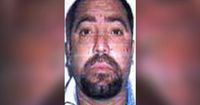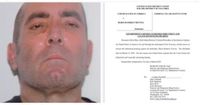Mario Ramírez Treviño, known as "Mario Pelón" or "X20", the former leader of the Gulf Cartel, died on March 13, 2025, while incarcerated in a federal prison in the United States. The confirmation of his death came from the U.S. Department of Justice, which cited diabetes as the cause of death. Ramírez Treviño, 63, had been in federal custody since December 2017, following his extradition from Mexico, where he had served four years in prison.
His demise marks the end of an era in the tumultuous history of drug trafficking in Mexico. The Gulf Cartel, once a powerful player in the narcotics trade, has seen significant leadership changes and violence in recent years. Following Ramírez Treviño's death, the U.S. Prosecutor's Office filed a motion with the Court of the District of Columbia on March 21, 2025, to dismiss the criminal charges against him and cancel the pending sentencing hearing. The motion noted, "the accused died on March 13, 2025," prompting the government's request to formally close the case.
Ramírez Treviño was captured in August 2013 during an operation led by the Mexican Army in Reynosa, Tamaulipas, after a lengthy manhunt. He took control of the Gulf Cartel in 2012, succeeding Jorge Eduardo Costilla Sánchez, alias "El Coss", who was apprehended in September of that year. Under his leadership, the cartel engaged in fierce battles with rival factions, particularly the Northeast Cartel, exacerbating violence across Tamaulipas.
During his time in the U.S. prison system, Ramírez Treviño became a cooperative witness, providing testimony that played a crucial role in various narcotics cases. Notably, he testified against Rubén Oseguera González, alias "El Menchito", the son of the Jalisco Nueva Generación Cartel leader, Nemesio Oseguera Cervantes, also known as "El Mencho". Thanks to his cooperation, Oseguera González was sentenced to life imprisonment plus 30 years earlier this month.
Despite his criminal past, which included charges of drug trafficking and money laundering, Ramírez Treviño's death leaves a significant vacuum in the Gulf Cartel's leadership structure. His tenure as a leader was marked by an increase in drug trafficking operations, particularly cocaine and marijuana, into the United States. In 2010, he was listed among the most dangerous drug traffickers by the U.S. Treasury Department, which offered a reward of up to five million dollars for information leading to his capture.
Ramírez Treviño's capture and subsequent extradition to the U.S. were seen as significant blows to organized crime in Mexico. His leadership was characterized by a brutal crackdown on rival gangs and an attempt to stabilize the Gulf Cartel amidst internal strife. However, his death raises questions about the future of the cartel, which has been struggling to maintain its influence amidst ongoing violence and competition from other drug trafficking organizations.
While the U.S. Department of Justice has not released detailed information regarding the circumstances of his death, reports suggest that Ramírez Treviño's health had been deteriorating prior to his passing. His last video hearing took place in February 2024, and a trial was scheduled for May 2025, which he will not live to see.
In a broader context, Ramírez Treviño's death is a poignant reminder of the ongoing battle against drug trafficking in Mexico, which has claimed countless lives and disrupted communities. As the Gulf Cartel grapples with leadership changes and external pressures, analysts will be closely watching how this vacuum impacts the drug trade.
His legacy, intertwined with violence, power struggles, and a complex web of criminal networks, will undoubtedly influence the future landscape of narcotics trafficking in the region. As one of the last remaining figures from the cartel's earlier days, his passing signifies not just the end of his personal story, but potentially the decline of an era for the Gulf Cartel itself.
In conclusion, Mario Ramírez Treviño's death marks a significant turning point in the ongoing saga of drug trafficking in Mexico. His leadership, characterized by both violence and strategic maneuvering, has left a lasting impact on the Gulf Cartel and the broader landscape of organized crime.






